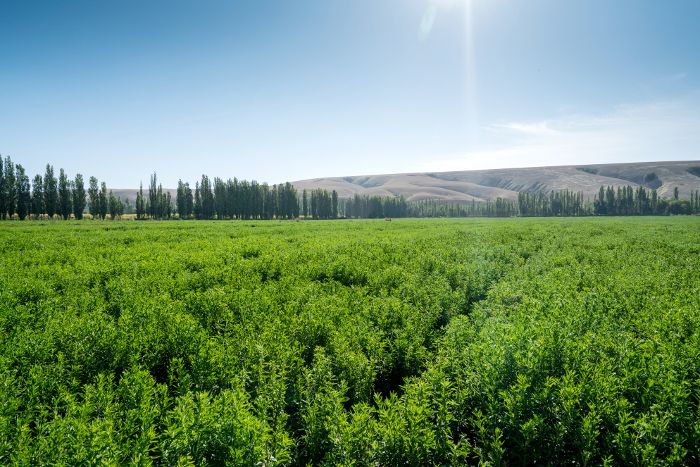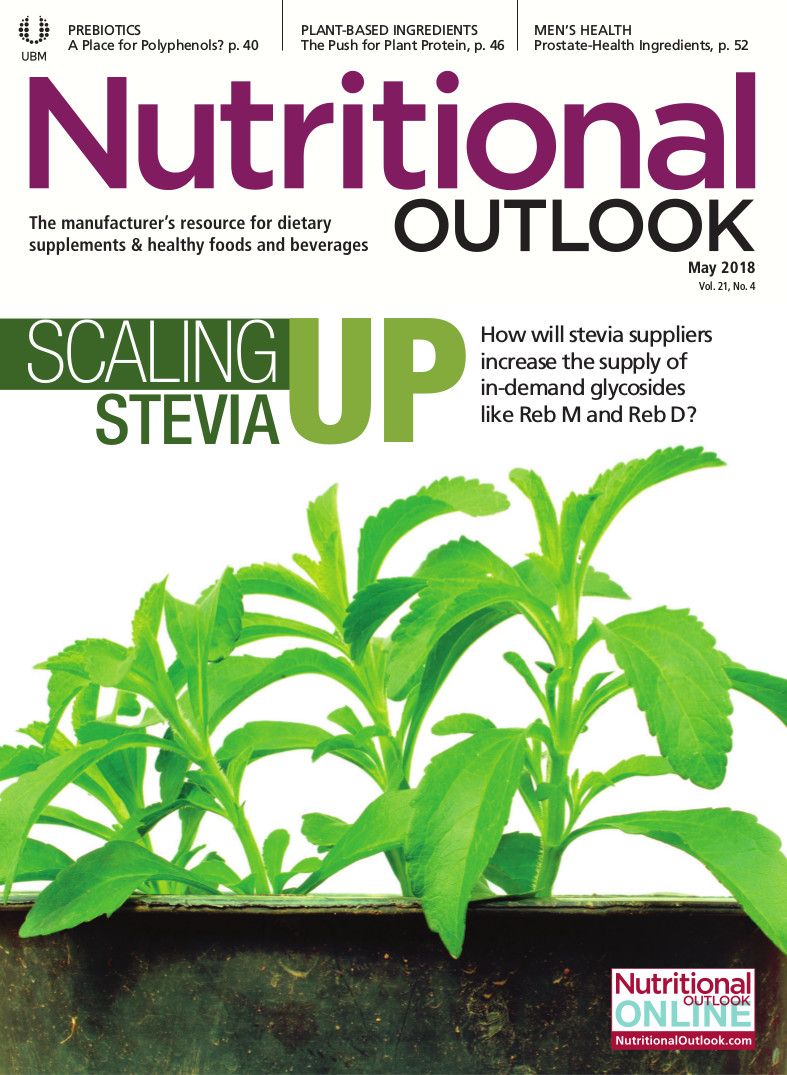How to Create a Reb A Stevia Ingredient That Is Still Affordable and Tastes Good
Sweet Green Fields announced a new development: its new Optimizer Stevia line that aims to retain the affordability of Reb A but provide a better-tasting ingredient.
Photo from Sweet Green Fields

By now, most would call Rebaudioside A a commodity glycoside. Reb A is the steviol glycoside that has been used in the stevia market the longest. It was the first steviol glycoside approved in the U.S. back in 2008. It’s the steviol glycoside most present in the stevia leaf. It is produced at largest scale and, as such, is supplied at commodity prices. However, one of the common challenges associated with formulating with Reb A is that Reb A has a bitter, lingering aftertaste. Last fall, however, stevia supplier Sweet Green Fields (SGF; Bellingham, WA) announced a new development: its new Optimizer Stevia line that aims to retain the affordability of Reb A but provide a better-tasting ingredient.
How did the company improve Reb A’s taste? Namely, by blending Reb A with other glycosides. Mel Jackson, PhD, chief science officer for Sweet Green Fields, explains that there are “two paths” to improving Reb A’s taste. The first is to improve the ingredient’s purification. “Purifying Reb A above 97% and eliminating the impurities from the leaf to the largest extent helps obtain a purer sweetness than the crude extracts.” The second way, he says, is to include “Reb A in a proprietary combination with other steviol glycosides,” which is what SGF has done with its new Optimizer Stevia line.
Jackson says this approach enabled the company to create Optimizer sweeteners that are more sugar-like and that outperform standard commodity stevia grades (Reb A 80–Reb A 97), while also preserving Reb A’s cost advantages. Optimizer Stevia’s cost is up to 30% less than that of a more expensive, high-purity Reb A grade like Reb A 99. “Optimizing the blend to produce a desired sensory outcome at an affordable price has resulted in compositions that can easily outperform Reb A–dominated stevia extracts and provide a cost savings,” he says. He adds that the four ingredients in the Optimizer Stevia line are best suited to “formulators who are aiming to achieve a medium level of sugar reduction, typically up to 6 brix.”
Last April, Sweet Green Fields entered into an exclusive distribution partnership with ingredients distributor Tate & Lyle (London). Tate & Lyle is distributing SGF’s stevia products, including the new Optimizer Stevia line.
Jackson says that while he believes highly purified Reb A products are “losing market share to some proprietary stevia extracts that are promoted heavily by the leading stevia suppliers in recent years,” Reb A ingredients still have their place in the market, and they are not going away anytime soon.
“For now, Reb A is prevailing due to cost considerations and partially the time it takes to test and commercialize a new ingredient in consumer products,” he says. Combinations are likely the way forward, he says, as “more customers are trialing and starting to like the taste profile of the steviol glycosides compositions-for example, Reb A with Reb B, Reb C, Reb D, Reb M, stevioside, and others.”
Also read:

Prinova acquires Aplinova to further increase its footprint in Latin America
April 7th 2025Prinova has recently announced the acquisition of Brazilian ingredients distributor Aplinova, which is a provider of specialty ingredients for a range of market segments that include food, beverage, supplements, and personal care.





















